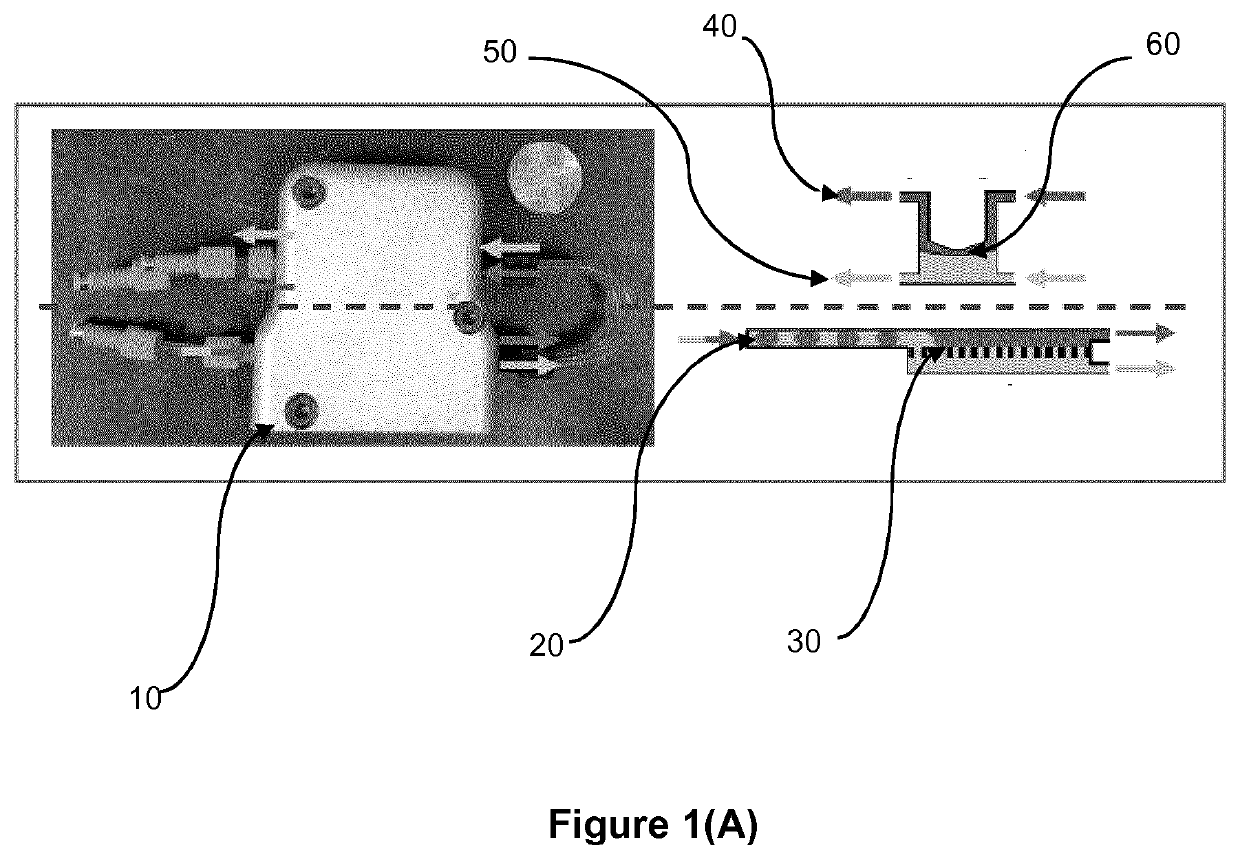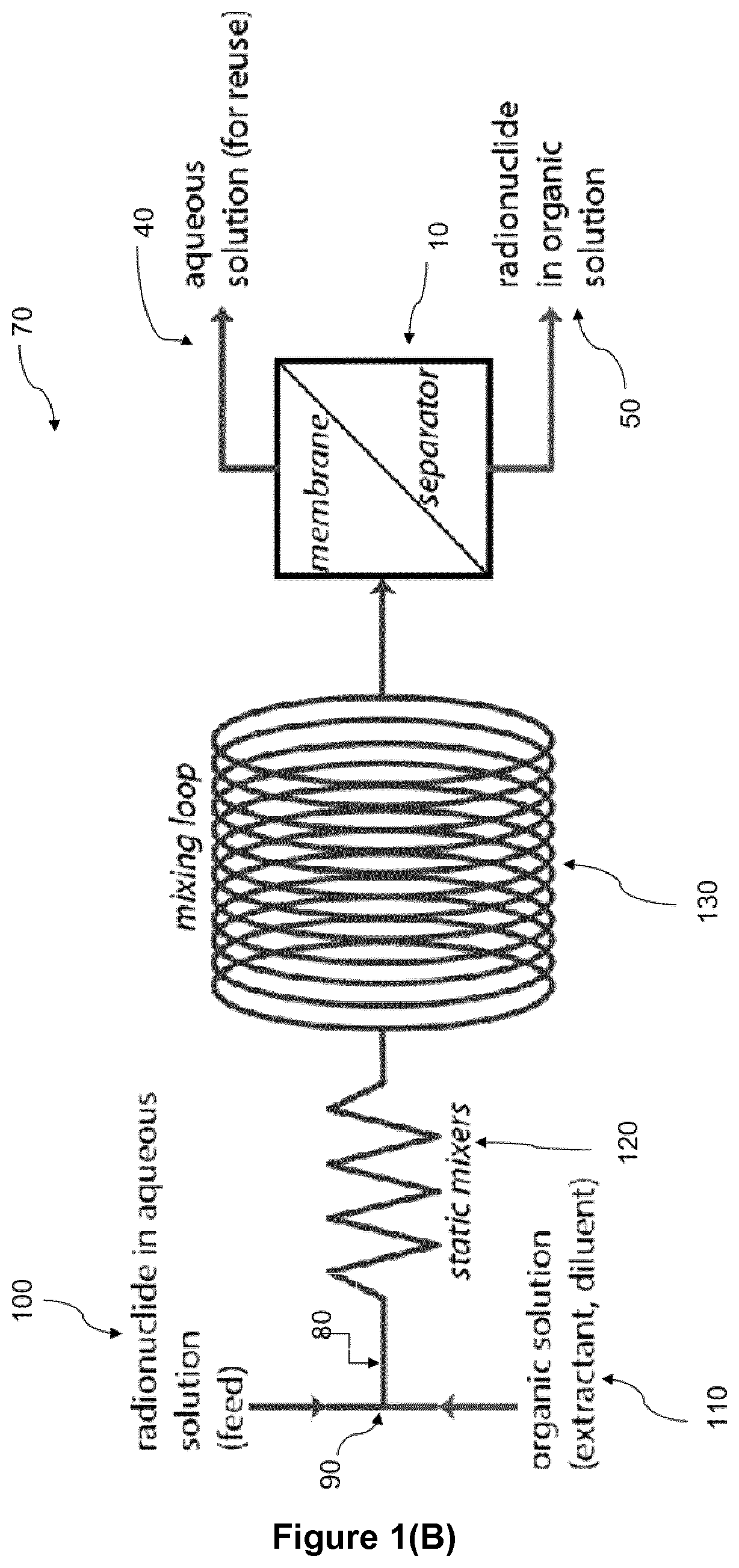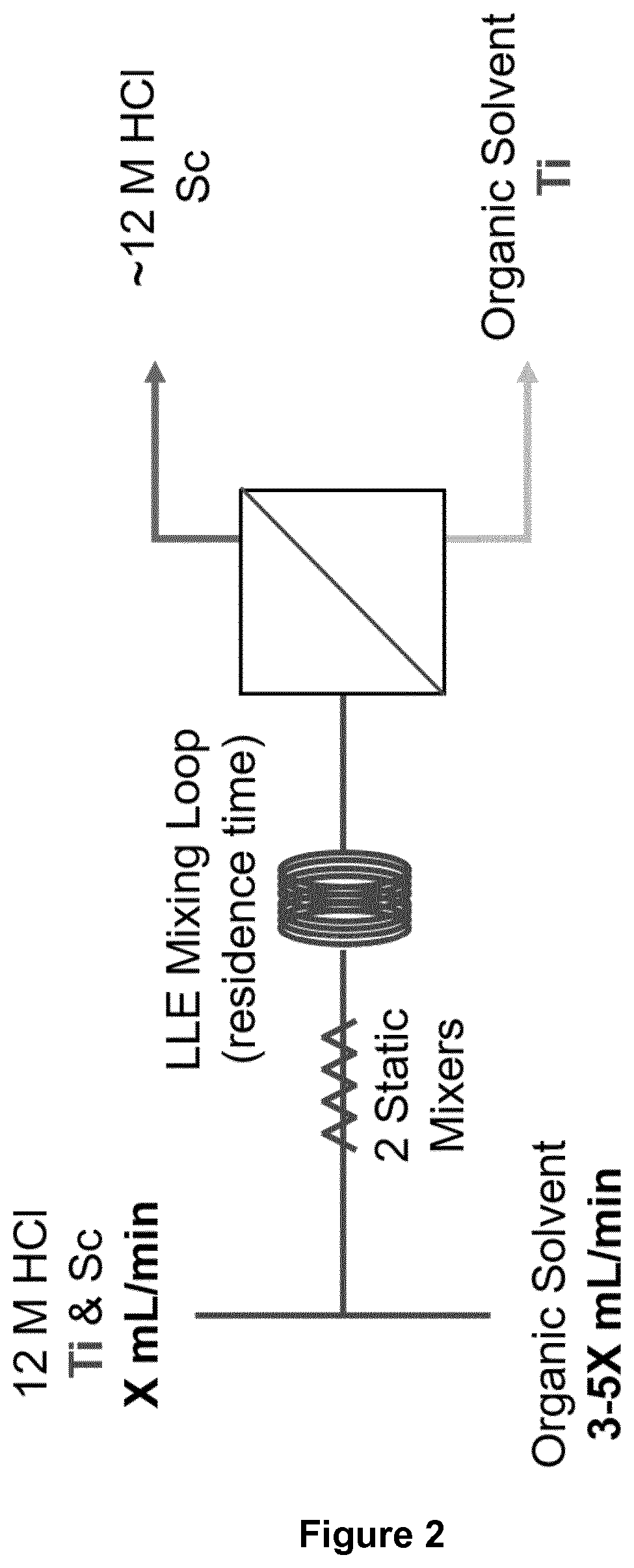Separation of Radiometals
a radiometal and metal ion technology, applied in the field of metal ions separation, can solve the problems of inherently low yield, inability to meet the needs of production, and inability to meet the needs of production, and achieve the effect of efficient on-demand production
- Summary
- Abstract
- Description
- Claims
- Application Information
AI Technical Summary
Benefits of technology
Problems solved by technology
Method used
Image
Examples
example 1
tion of Extractants for Batch Liquid-Liquid Extraction of Ti Ions from a Solution Also Containing Sc Ions
[0180]The preliminary screening experiments were performed in batch using gravity separation. It had been reported64 that 45Ti can be extracted from aqueous HCl into 1-octanol, presumably as [45Ti]Ti n-octyloxide 1, Structure 1.
TABLE 1Liquid-liquid batch extraction of 45Ti from cyclotron-irradiated Sc foil digested in 37% HCl, except entry 1a.EntryExtraction system (organic phase)DEE (%)11-octanol, neata0.04421-octanol, neat0.884731,2-Decanediol, 0.1M in 1-octanol1.25442,3-naphthalene diol, 0.1M in 1-octanol1.1525C10F21CH2CH(OH)CH2OHb6Guaiacol, neat375D is the distribution coefficient,D = [45Ti(org)] / [45Ti(aq)] and EE is the extraction efficiency,EE = 100% * [45Ti(org)] / [45Ti(total)] as measured by a radiation detector.a20% HCl;btrifluorotoluene / hexafluoropropanol (1 / 1, (v / v))
We observed little extraction when a solution of 45Ti in 20% HCl was used (Table 1, entry 1). Using 37% H...
example 2
tion of Extractants and Conditions for Liquid-Liquid Extraction and Phase Separation in Flow of Ti Ions from a Solution Also Containing Sc Ions
[0181]The LLE and phase separation in flow were performed using a membrane-based separator with a PFA diaphragm for integrated pressure control (FIG. 2).
[0182]A flow schematic of the experimental setup is analogous to what has been depicted in FIG. 2. In short, the two phases passed through PFA tubing ( 1 / 16″ (1.5875 mm) OD, 0.03″ (0.762 mm) ID) and were mixed in a PEEK tee, followed by two 10 element PTFE static mixers (3.4 cm total length) and various lengths of PFA mixing tubing, which were used to control the residence time of the LLE. After the static mixers, steady liquid-liquid segmented flow was developed and passed through the mixing loop and finally into the membrane separator, where the organic phase permeated the membrane while the aqueous phase was retained.
[0183]To find the optimum extraction conditions, the diaphragm thickness,...
example 5
tion of Extractants and Conditions for Liquid-Liquid Extraction and Phase Separation in Flow of Zr Ions from a Solution Also Containing Y Ions
[0216]Earlier reports indicated that zirconium can be extracted from its acidic solutions into an organic phase containing trioctylphosphine oxide (TOPO).35 However, the preliminary batch experiments containing the equimolar solutions of 0.01 M ZrCl4 and YCl3 in 37% HCl produced a 3-phase mixture.
[0217]We began by testing whether the phase separation in this extraction system can be improved under the LLEF conditions.
[0218]Starting with the conditions optimized for Ti / Sc extraction (0.2 μm membrane, 0.002″ (0.051 mm) diaphragm, and 0.05 / 0.15 mL / min aq / org flow rate) we found that extensive breakthrough of the third phase occurred at both 0.2 μm and 0.1 μm membrane pore size (Table 6, entry 1). Lowering the concentrations of ZrCl4 and YCl3 to 0.001 M and then to 0.0005 M did not result in any improvement in the phase separation either (Table 6,...
PUM
| Property | Measurement | Unit |
|---|---|---|
| p endpoint energy | aaaaa | aaaaa |
| p endpoint energy | aaaaa | aaaaa |
| residence time | aaaaa | aaaaa |
Abstract
Description
Claims
Application Information
 Login to View More
Login to View More - R&D
- Intellectual Property
- Life Sciences
- Materials
- Tech Scout
- Unparalleled Data Quality
- Higher Quality Content
- 60% Fewer Hallucinations
Browse by: Latest US Patents, China's latest patents, Technical Efficacy Thesaurus, Application Domain, Technology Topic, Popular Technical Reports.
© 2025 PatSnap. All rights reserved.Legal|Privacy policy|Modern Slavery Act Transparency Statement|Sitemap|About US| Contact US: help@patsnap.com



